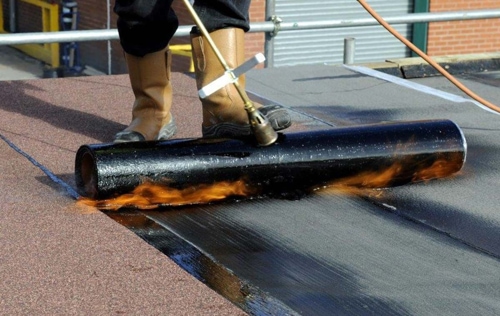, in this article from Nikan West company website the gilsonite producer in Iran, we explain what isogum (Waterproofing) is and what its uses are.
? (Waterproofing) What is Isogum
Isogum (Waterproofing) is a very suitable covering against moisture penetration. This material has been substituting bitumen for many years to cover different parts of buildings, including roofs, swimming pools, toilets, etc.
In the past, various types of artificial and natural bitumen were a good choice for insulating different parts of the building; but today, isogums have become the first choice of building manufacturers with more resistance and easier installation.
Of course, the main material of this product is bitumen. Bitumen is available in natural and artificial types. This product is usually made with the help of synthetic bitumen or refinery bitumen. However, in higher quality samples and to improve some properties such as increasing flexibility, increasing lifespan, reducing fragility, etc., bitumen or gilsonite is also used in it. This makes it possible to use Isogam in a wider variety of conditions in various industries.
The constituent structure of Isogum
This product may be made of different layers and parts according to the manufacturing method and the final quality. But in general, what can be seen in all types of this product; the layers are as follows:
Polyethylene film
Polyester
Tissue
Other additives
Types of isogum
Today, these products are produced with different characteristics. But in a general classification, two types of blown Isogum and polymer isogum can be identified.
Blown
The sample produced as blown is an older method of production; for this reason, its quality is usually a bit lower and, of course, its price is lower. In this production method, the main material is blown bitumen. Blown bitumen is a type of bitumen that is produced by blowing hot air into fuel oil or furnace oil.
Tissue, aluminum layer, talc powder, plastic sack, polyester, straw and APP materials with different quality grades are the other parts of blown isogum. The reason for the lower quality and durability of this product is the imperfection of the bitumen produced.
Polymeric
The second type of this product is known as polymeric isogum. In short, the main difference is in the application of bitumen. This product uses refined bitumen. Refinery bitumen makes up about 70% of the raw materials in polymeric iso gum; therefore, its high quality will play an important role in the final quality of the product.
Refinery bitumen has a higher purity due to extraction in the refinery distillation tower. In this process, various additives such as gasoline, gas oil, lamp oil, light oils, petroleum solvents, etc. are separated from crude oil. The refined bitumen used in this product is ultimately semi-solid.
Type of coating
Another category of this product is based in the type of coating. Isogams are produced with various coatings. Aluminum veneer, pebble veneer and plain veneer are the most common.
Aluminum-clad models are suitable for roofs and other areas that are exposed to direct sunlight. This coating reflects sunlight, causing less heat and damage to the isogam.
Uncoated models for places that are not visible; it is used as insulation for sanitary services, etc.
Finally, pebbles are a good choice for busy neighborhoods. These coatings are more beautiful and also more resistant to constant pressure.
Dimensions and appearance
In terms of appearance and dimensions, two common types of this product can be named. Roll isogams, which are usually one meter wide and ten meters long per roll; They are mostly used in various industries. But there are other types of this product that are called iso shingle or cut. This product is used to insulate spaces that are visible from the outside (such as gable roofs). This product is in different dimensions and has a beautiful appearance.


